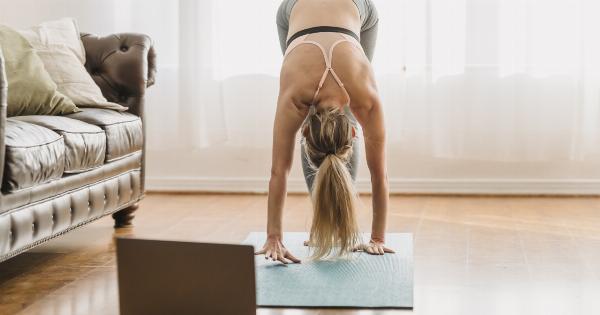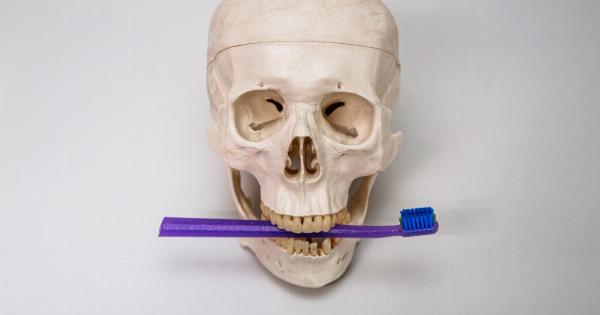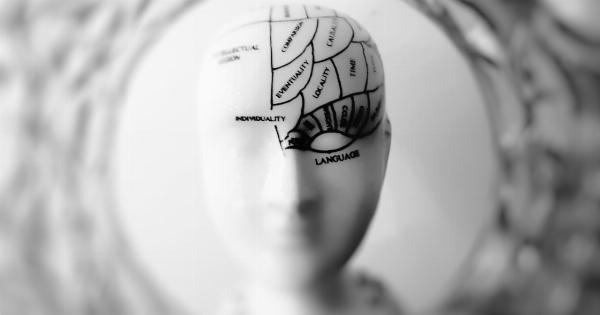Menopause is a natural biological process that every woman goes through as she ages. However, the symptoms associated with menopause can be quite challenging to deal with.
From hot flashes and mood swings to fatigue and weight gain, menopause can significantly impact a woman’s physical and emotional well-being.
While there are several treatment options available to manage menopause symptoms, such as hormone therapy and medication, many women are now turning to alternative methods like exercise to find relief.
Regular physical activity has been shown to alleviate menopause symptoms and improve overall health.
The Power of Exercise in Combating Menopause Symptoms
Exercise is an excellent tool for managing menopause symptoms as it offers a multitude of benefits, ranging from alleviating hot flashes to improving mood and sleep quality. Here’s how working out can help combat various menopause-related issues:.
1. Reducing Hot Flashes and Night Sweats
Hot flashes and night sweats are the most common and uncomfortable symptoms of menopause.
Research suggests that regular exercise, particularly aerobic activities like brisk walking, running, or swimming, can reduce the frequency and intensity of hot flashes. Exercise improves cardiovascular health and helps regulate body temperature, leading to fewer incidences of hot flashes and night sweats.
2. Boosting Mood and Reducing Anxiety
Menopause often brings with it mood swings, irritability, and heightened anxiety. Engaging in physical activity triggers the release of endorphins, often referred to as “feel-good” hormones.
These endorphins act as natural mood lifters and can help reduce anxiety, depression, and stress. Exercise also promotes better sleep, which has a positive impact on mood regulation.
3. Managing Weight Gain and Muscle Loss
Many women experience weight gain and a decline in muscle mass during menopause. Regular exercise can combat these changes by boosting metabolism, burning calories, and preserving lean muscle mass.
Strength training exercises like weightlifting or resistance training are especially beneficial in maintaining muscle strength and preventing age-related muscle loss.
4. Strengthening Bones and Preventing Osteoporosis
Menopause increases a woman’s risk of developing osteoporosis, a condition characterized by weak and brittle bones.
Weight-bearing exercises such as jogging, dancing, or hiking stimulate bone growth and enhance bone density, reducing the risk of osteoporosis. Exercise also improves balance and coordination, reducing the likelihood of falls and fractures.
5. Enhancing Cardiovascular Health
Estrogen, a hormone that declines during menopause, provides some protection against heart disease. As estrogen levels decrease, women become more susceptible to cardiovascular issues.
Regular aerobic exercises like cycling, swimming, or playing tennis improve heart health, lower blood pressure, and decrease the risk of heart disease in menopausal women.
6. Alleviating Sleep Problems
Many menopausal women experience disrupted sleep patterns and insomnia. Exercise can help regulate circadian rhythms, making it easier to fall asleep and achieve a more restful sleep.
However, it is essential to avoid vigorous exercise close to bedtime as it may lead to increased alertness and difficulty in winding down.
7. Improving Brain Function and Memory
Menopause can be accompanied by cognitive changes and memory lapses. Engaging in regular physical activity boosts blood flow to the brain, improves cognitive function, and enhances memory and concentration.
Exercise also helps reduce the risk of age-related cognitive decline and conditions such as dementia and Alzheimer’s disease.
8. Promoting Overall Well-being
Regular exercise has a positive impact on overall well-being, both physical and emotional. It enhances self-esteem, boosts energy levels, and promotes a sense of accomplishment.
Exercise can also provide an opportunity for social interaction and support, whether through joining fitness classes, walking groups, or sports teams, which are beneficial for mental health.
Creating an Effective 8-Hour Workout Routine
Now that you understand the benefits of exercise in combating menopause symptoms, it’s time to create an effective 8-hour workout routine.
While an 8-hour workout may sound daunting, remember that this time includes both structured exercise sessions and your daily physical activity levels.
1. Start with Cardiovascular Exercises – 1 Hour
Cardiovascular exercises elevate the heart rate, improve cardiovascular health, and aid in weight management. Aim for 30-45 minutes of moderate-intensity aerobic exercises like brisk walking, cycling, or dancing five days a week.
Add variety to your routine to keep it exciting and prevent boredom.
2. Strength Training – 2 Hours
Strength training exercises help maintain muscle mass, promote bone health, and increase metabolism. Include at least two days of strength training exercises targeting major muscle groups.
This can involve using resistance bands, dumbbells, weight machines, or bodyweight exercises like push-ups, squats, and lunges.
3. Flexibility and Balance Exercises – 30 Minutes
Menopause can impact flexibility and balance, increasing the risk of falls. Incorporate 15-30 minutes of flexibility exercises like yoga or Pilates to improve muscle flexibility and joint range of motion.
Adding balance exercises, such as standing on one leg or using a stability ball, can enhance stability and prevent falls.
4. Relaxation Techniques – 30 Minutes
Menopause can be a stressful time for many women. Dedicate 30 minutes daily to relaxation techniques such as deep breathing, meditation, or tai chi. These practices can help calm the mind, reduce stress, and promote relaxation and better sleep.
5. Daily Physical Activity – 4 Hours
Aside from dedicated exercise sessions, aim to incorporate physical activity throughout the day. Engage in activities like walking, gardening, or household chores to boost your overall daily activity level.
Investing in a pedometer or fitness tracker can help track your steps and set activity goals.
6. Stay Hydrated and Fuel Your Body
Throughout your 8-hour workout routine, it is crucial to stay hydrated by drinking plenty of water. Proper hydration supports overall bodily functions and aids in recovery.
Additionally, ensure you fuel your body with a balanced diet rich in fruits, vegetables, lean proteins, and whole grains to provide the necessary nutrients for energy and muscle recovery.
7. Listen to Your Body and Seek Professional Guidance
Remember that everyone’s fitness levels and capabilities are different. It’s essential to listen to your body and avoid pushing yourself beyond your limits.
If you have any underlying health concerns or are new to exercise, consult with a healthcare professional or a certified fitness trainer who can guide you on developing a safe and effective workout routine.
8. Stay Consistent and Celebrate Progress
Lastly, staying consistent with your 8-hour workout routine is crucial to reap the benefits. Make exercise a part of your daily routine and set achievable goals.
Celebrate your progress no matter how small, as every step forward is a step towards improved overall health and a better quality of life during menopause.
Conclusion
Menopause is a unique journey for every woman, and finding effective ways to manage its symptoms is vital. Exercise offers a natural and holistic approach to combat the various challenges menopause presents.
By incorporating a well-rounded 8-hour workout routine into your daily life, you can alleviate menopause symptoms, improve your overall well-being, and embrace this new chapter with positivity and confidence.






























